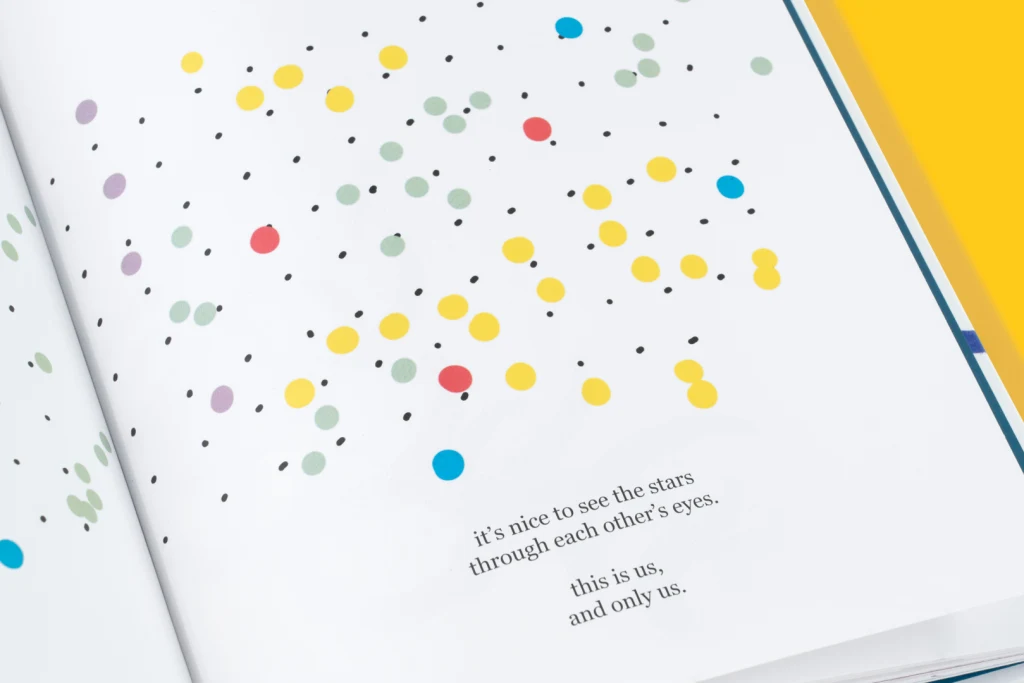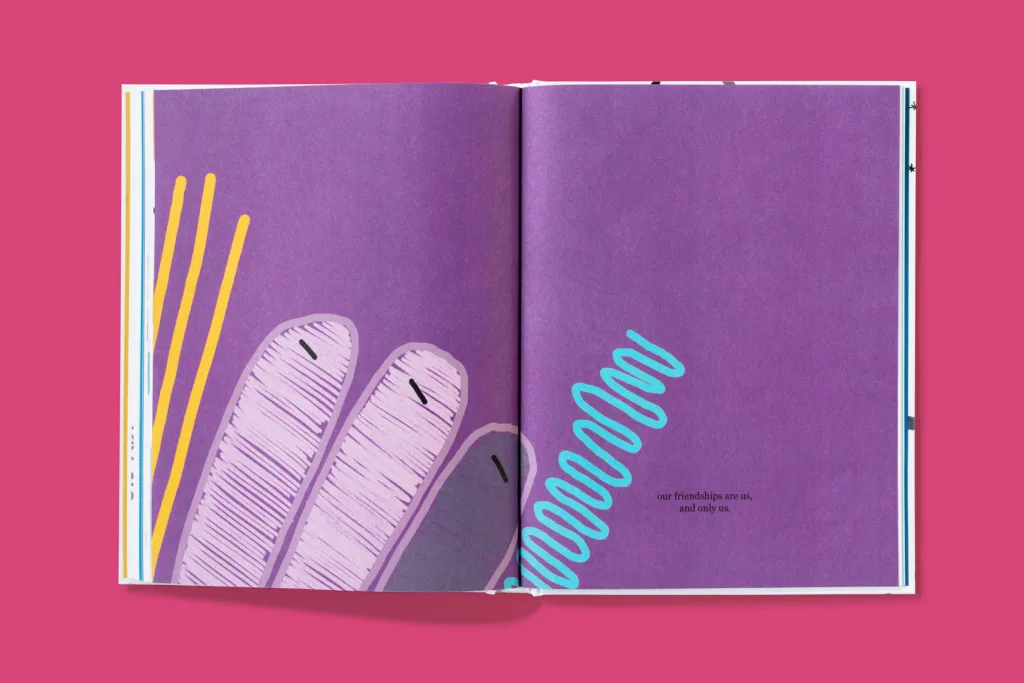
In a new children’s book from Pentagram partner Giorgia Lupi and her coauthor, Madeleine Garner, data collection is presented as a beautiful way for kids (and adults) to process their emotions and the world around them.
The book, titled This is Me and Only Me and published by Corraini, follows the narrator as they go to school, bike to the market, share with friends, and parse out big emotions like fear and anticipation. There are no children pictured in the book, though. Instead, the whole story is illustrated through data.
For Lupi—an information designer by trade—introspective data visualization is second nature. Growing up, she says, she charted her various crushes on an x-y axis. And as an adult, her data collection and illustration techniques have been vital to help process her experience with long Covid. Lupi subscribes to a belief that she calls “data humanism,” which encompasses the idea that data can be used to tell deeply personal, meaningful stories. She’s already written two books on the subject: Dear Data, which chronicled a yearlong exchange of personal data-based postcards with a friend, and Observe, Collect, Draw!, which taught adults how to journal using data.

After the release of Dear Data, Lupi says she heard from “hundreds of teachers” who were using the book’s data-visualization techniques as learning tools for kids of all ages. Those messages served as the initial inspiration for creating a data-centric children’s book.

“We tapped into a lot of knowledge that was shared from those teachers, from preschool to elementary school to secondary school—really looking into what worked and what’s natural for kids to express,” Lupi says. “What’s been interesting is that this kind of format can be used not only to teach kids the world of data, but most importantly, a new way of observing the world.”

The idea of observing the world through data might seem nebulous, if, like many people, your first idea of data is a point on a graph or a bar on a chart. But data collection can be much more than that. Take, for example, the narrator’s walk to school in This is Me and Only Me. Each of the five weekday journeys are represented by a pink line. A squiggle in the line is a new route, a dot is a pause, and a loop shows a slower pace. These simple symbols tell an entire story about just one small part of the narrator’s day. From tracking daily laughter to working through fear, This is Me and Only Me invites the reader to reflect on their own experiences through data visualization.

Garner, who worked as both a preschool teacher and a nanny before joining Lupi’s team at Pentagram, says these tools are especially helpful for young kids who are learning how to understand intense emotions.
“Going back to books I read when I was a child, some of the images and the stories stick with me to this day, and that’s because they speak to elements of childhood that are difficult for kids to vocalize,” Garner says. “It’s hard for them to talk about these things, but they’re having the deepest emotions all the time. I always had this dream of making books where children really felt understood. This book is this marriage of, how can we talk about data without ever saying the word ‘data,’ but, also, how can we make a book that’s just a good children’s book?”
Apply to the Most Innovative Companies Awards and be recognized as an organization driving the world forward through innovation. Don’t miss the super-early rate deadline on Friday, July 26!




